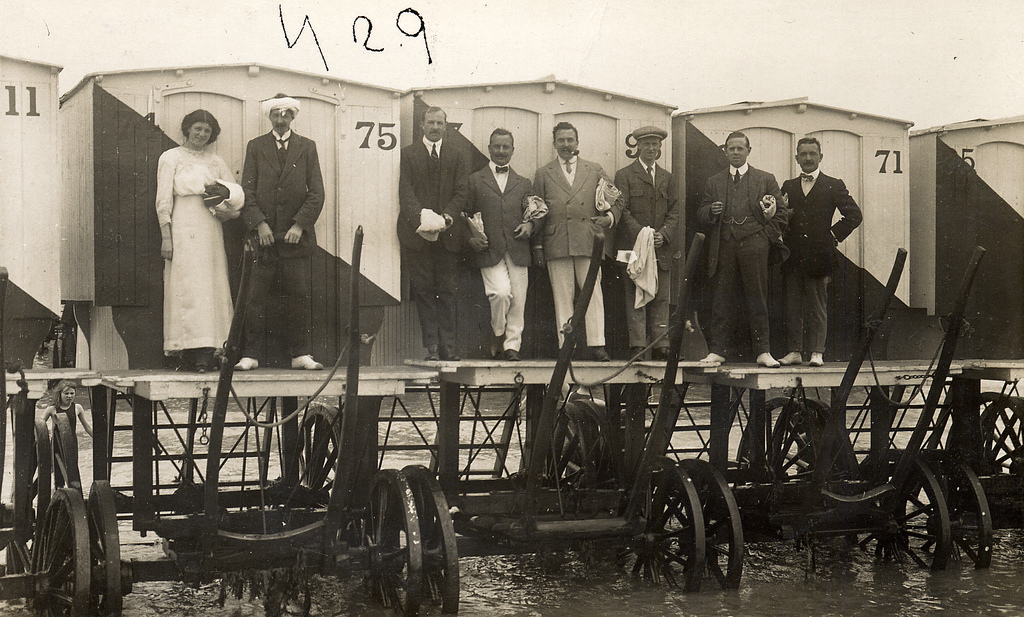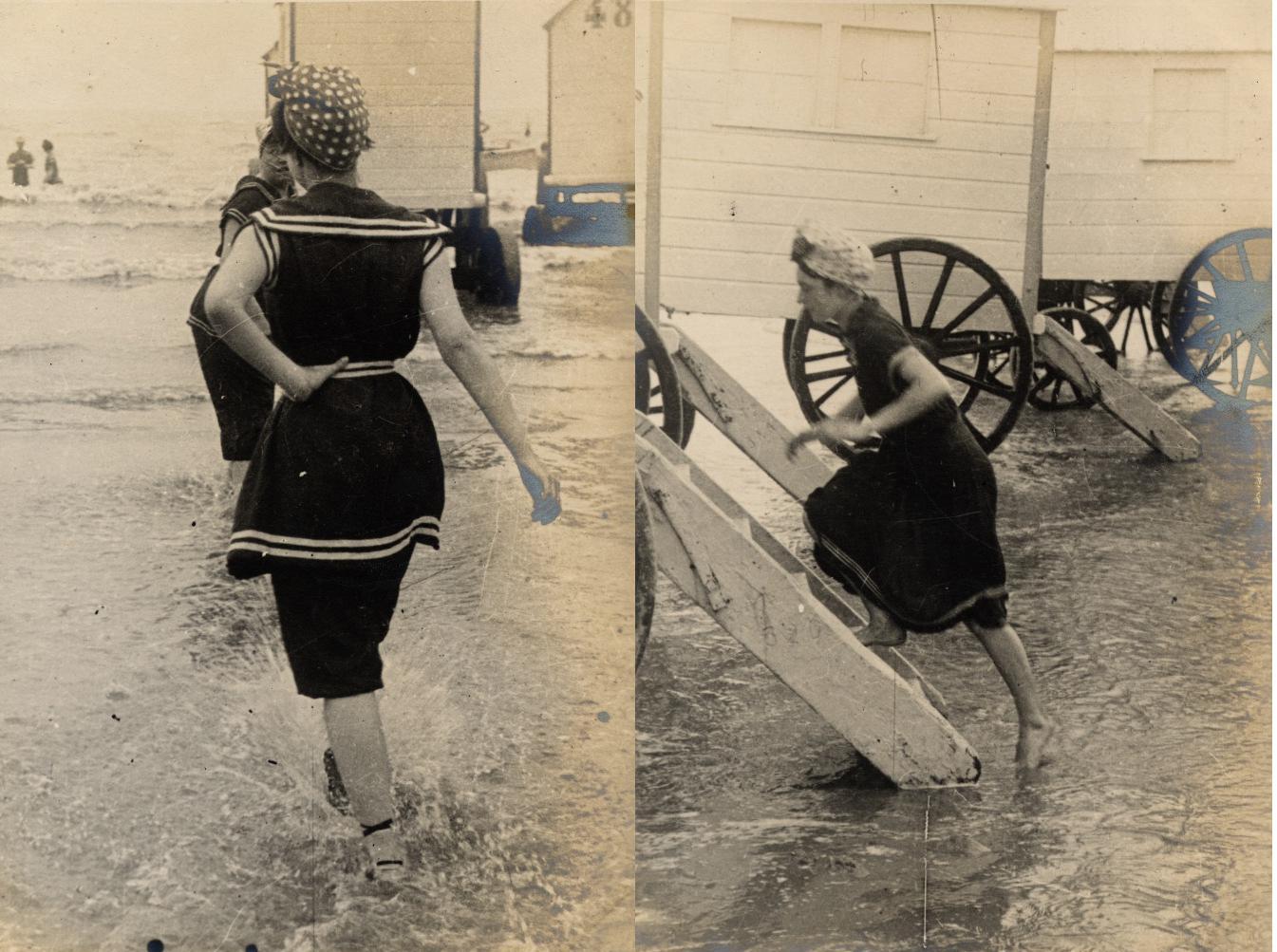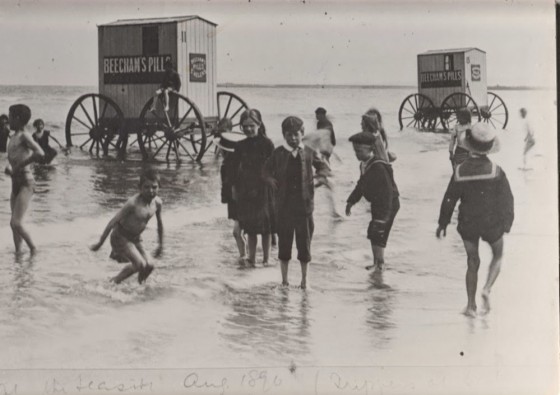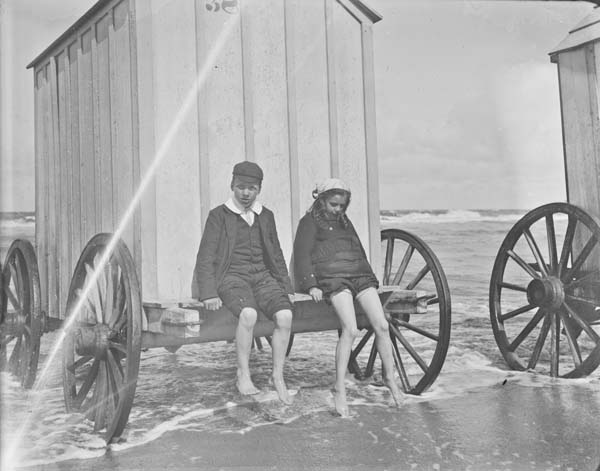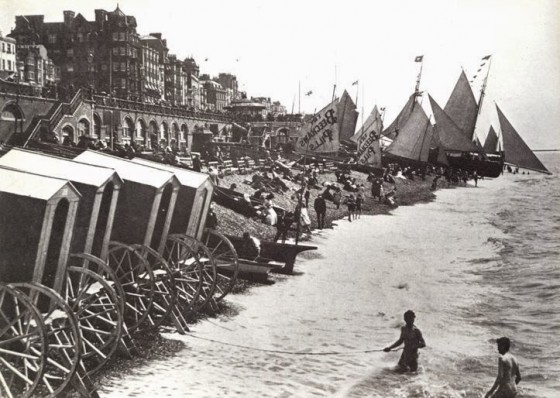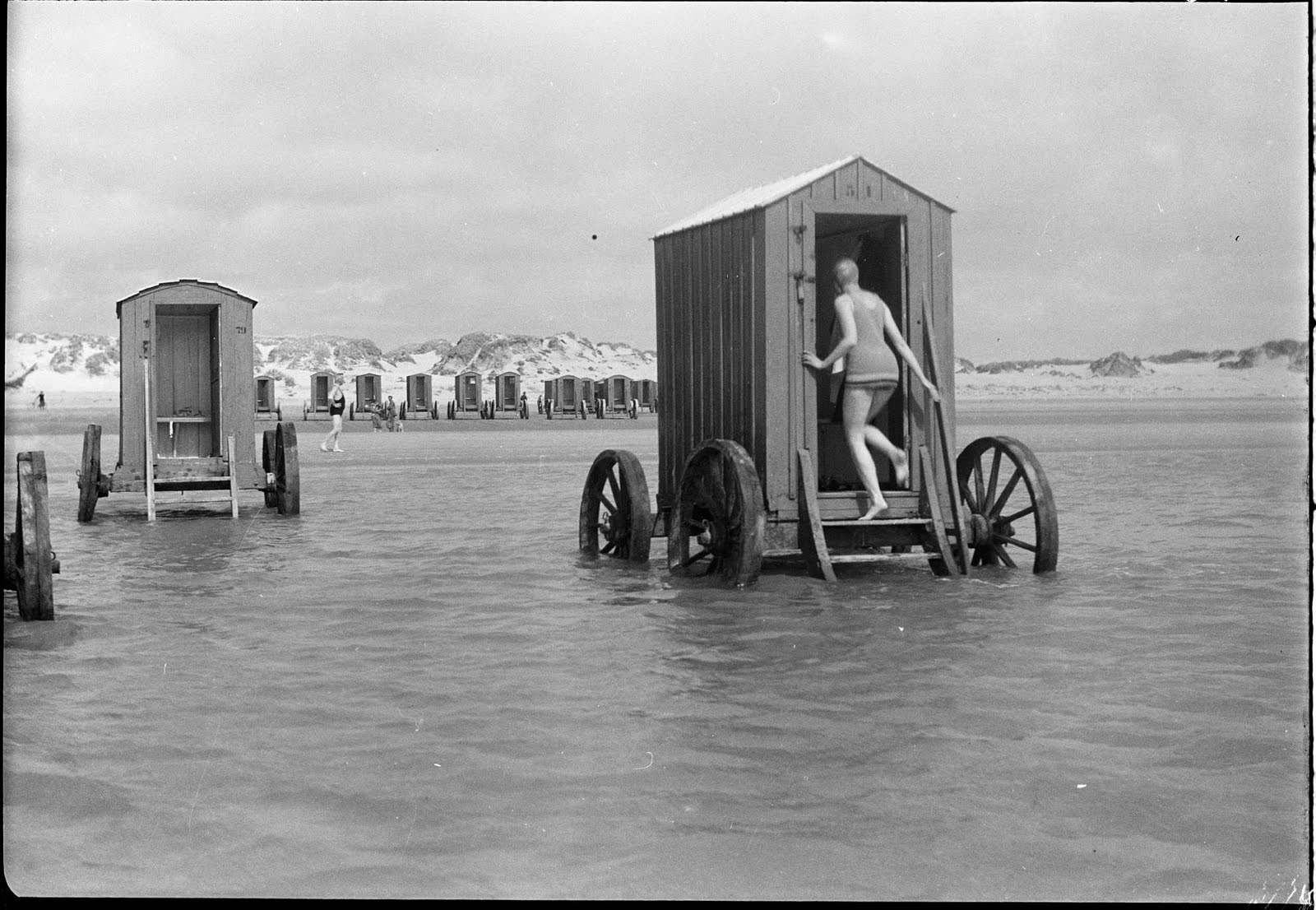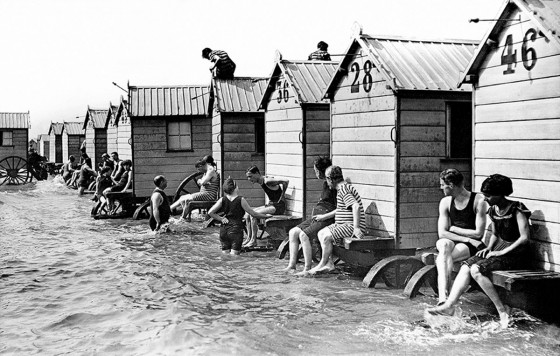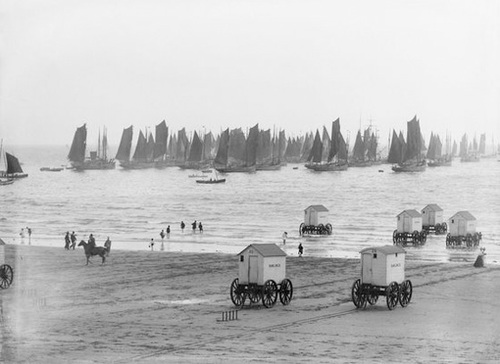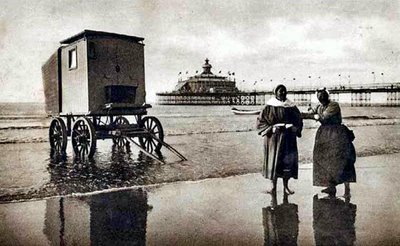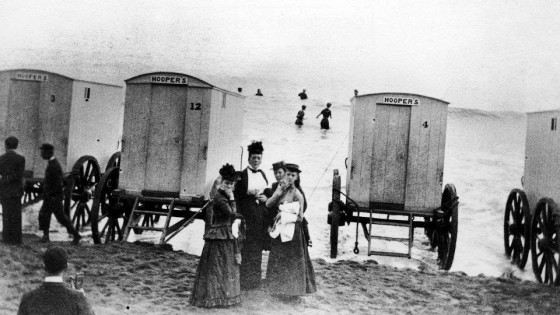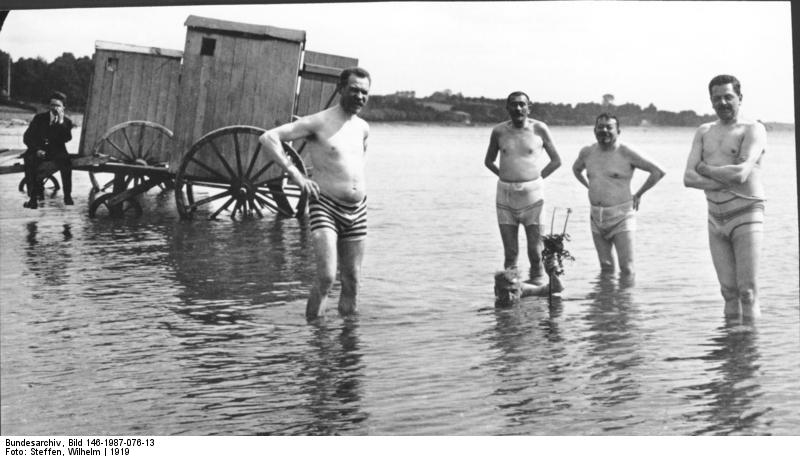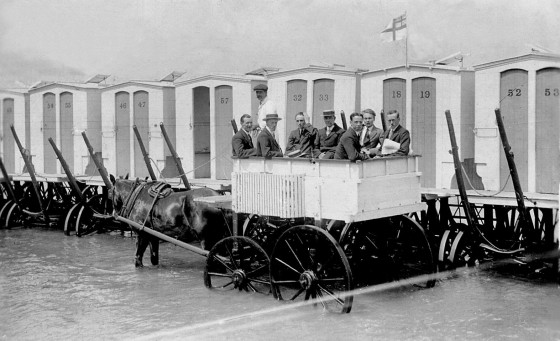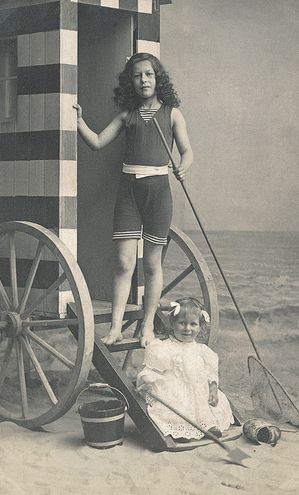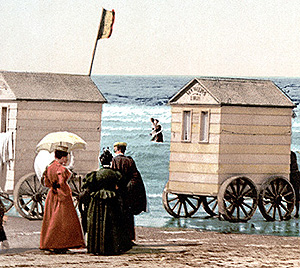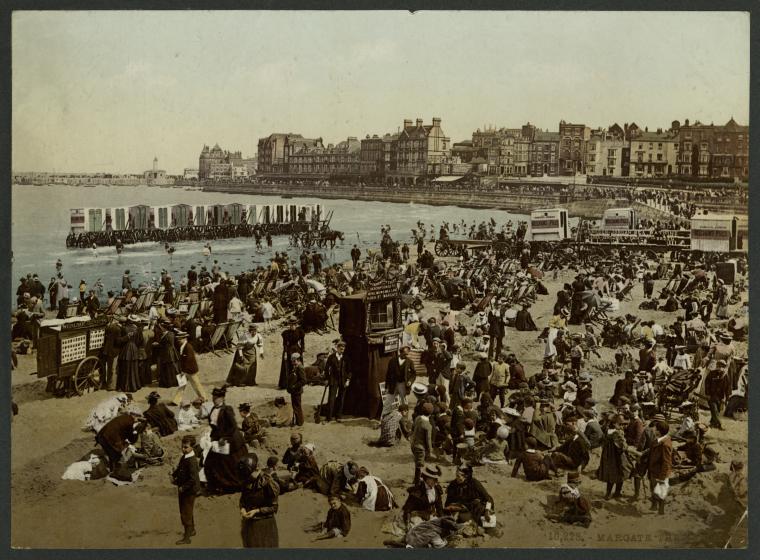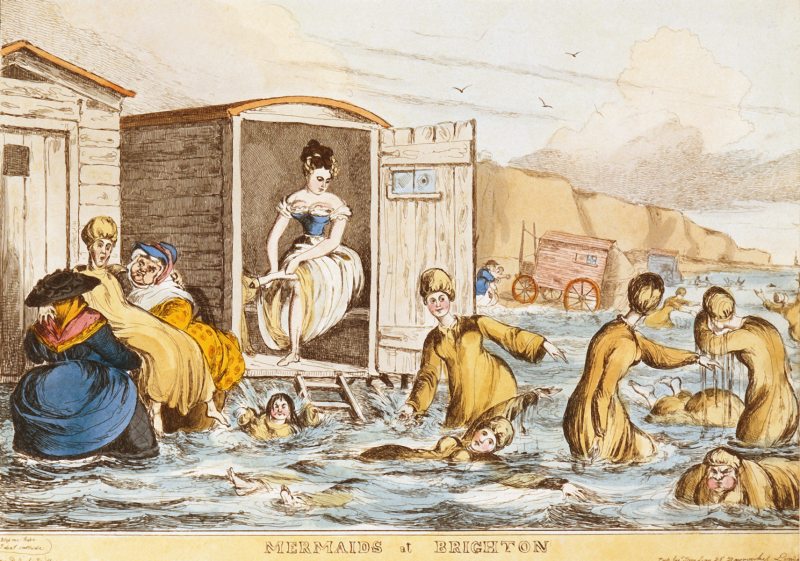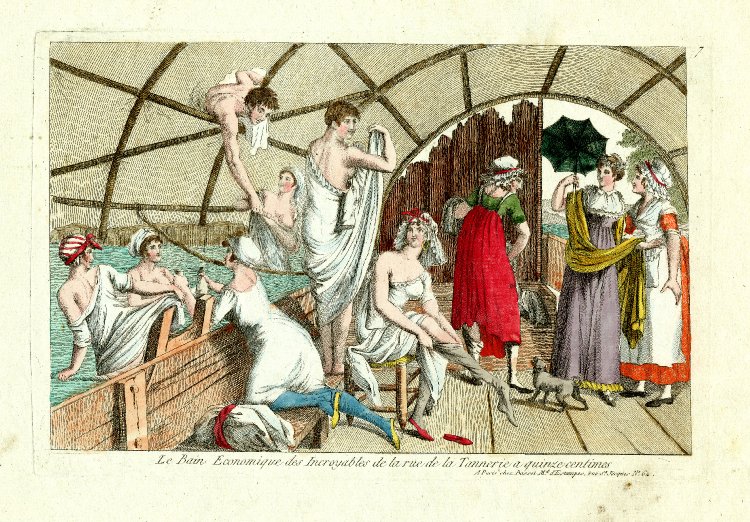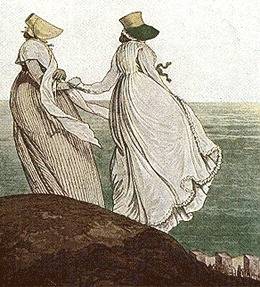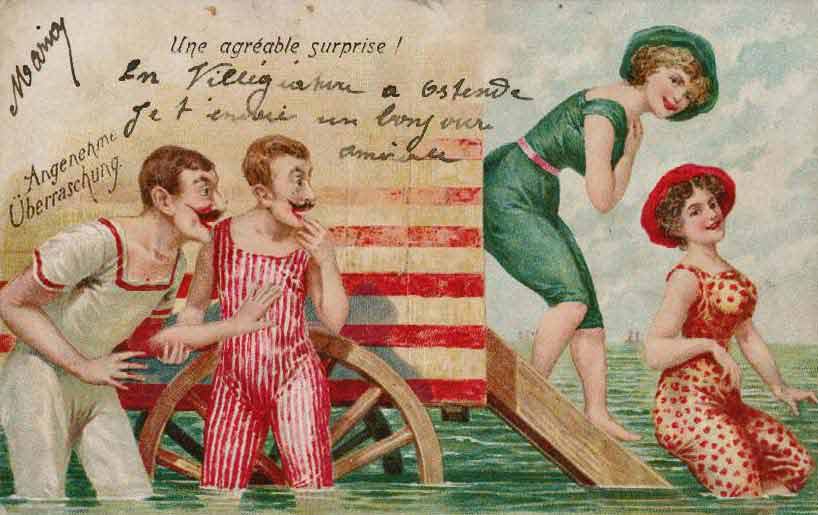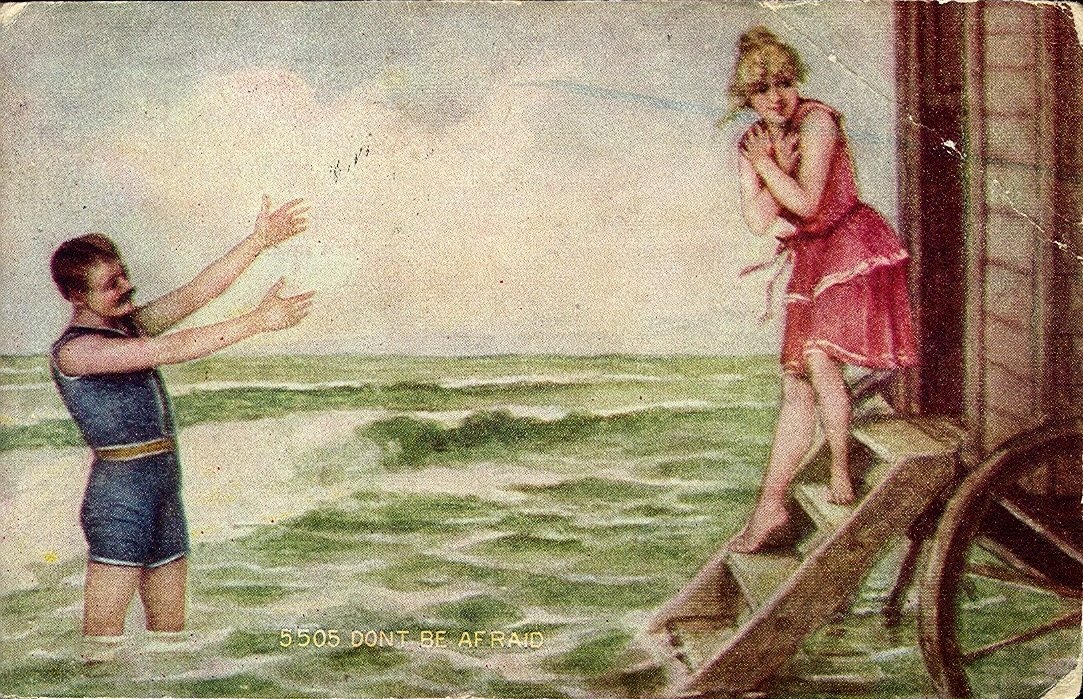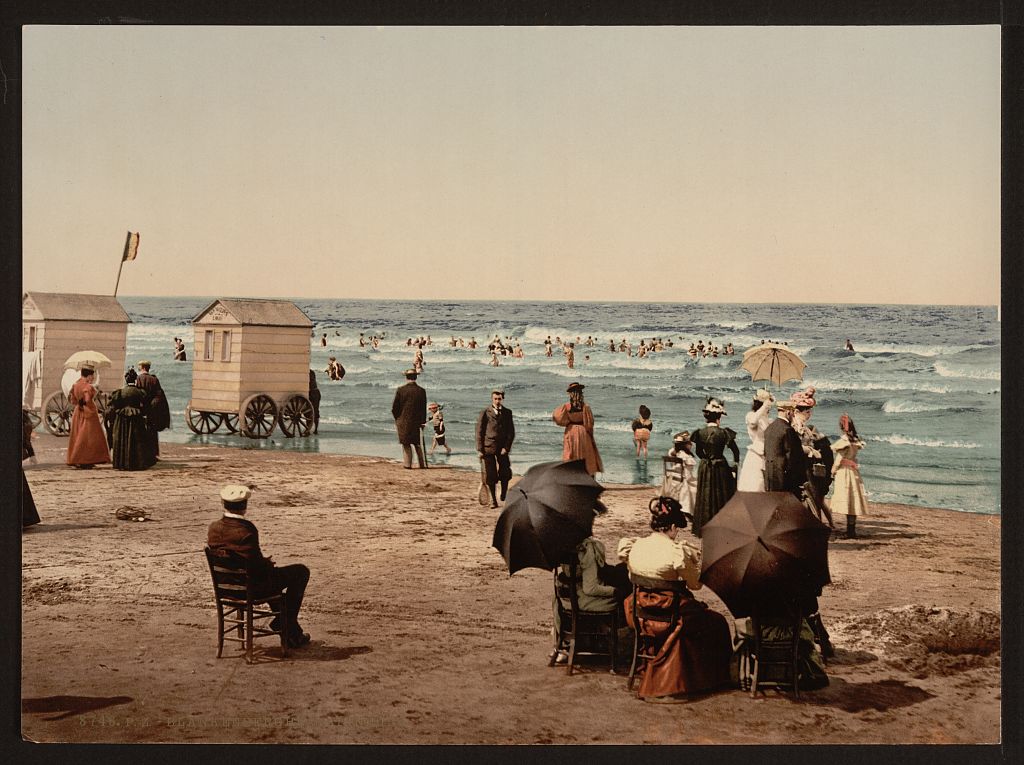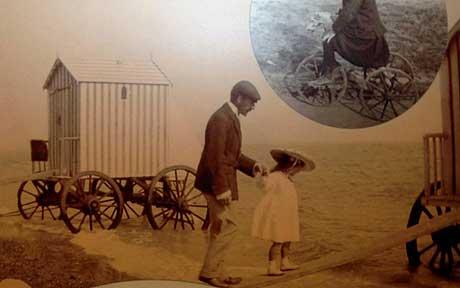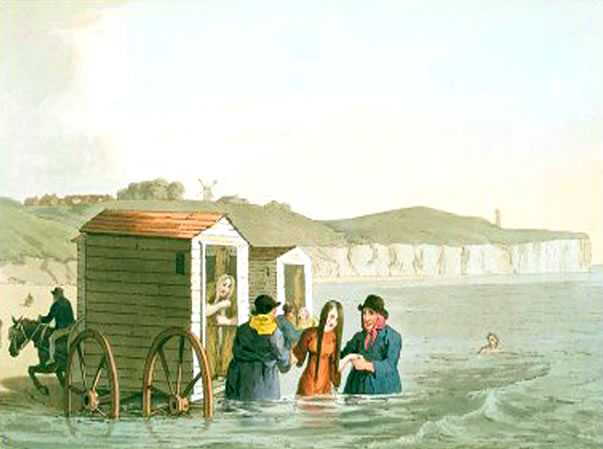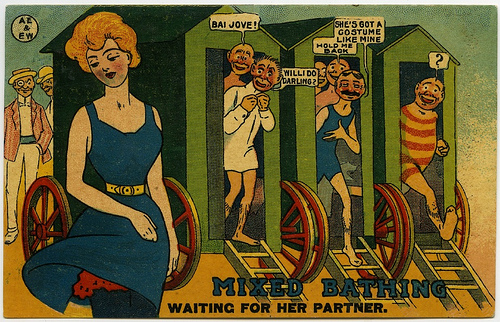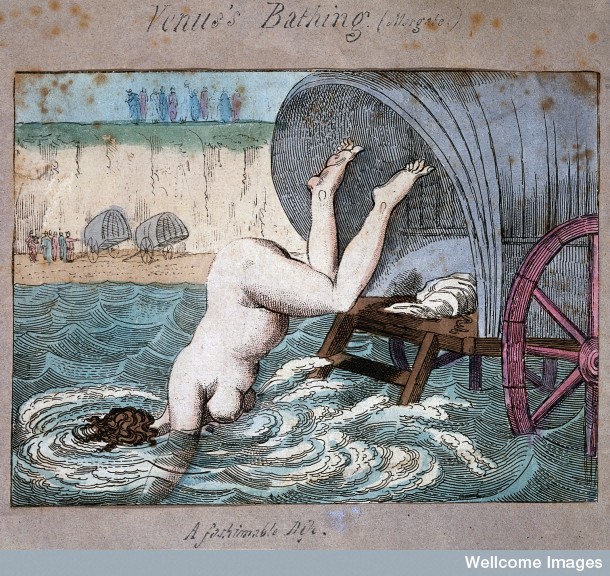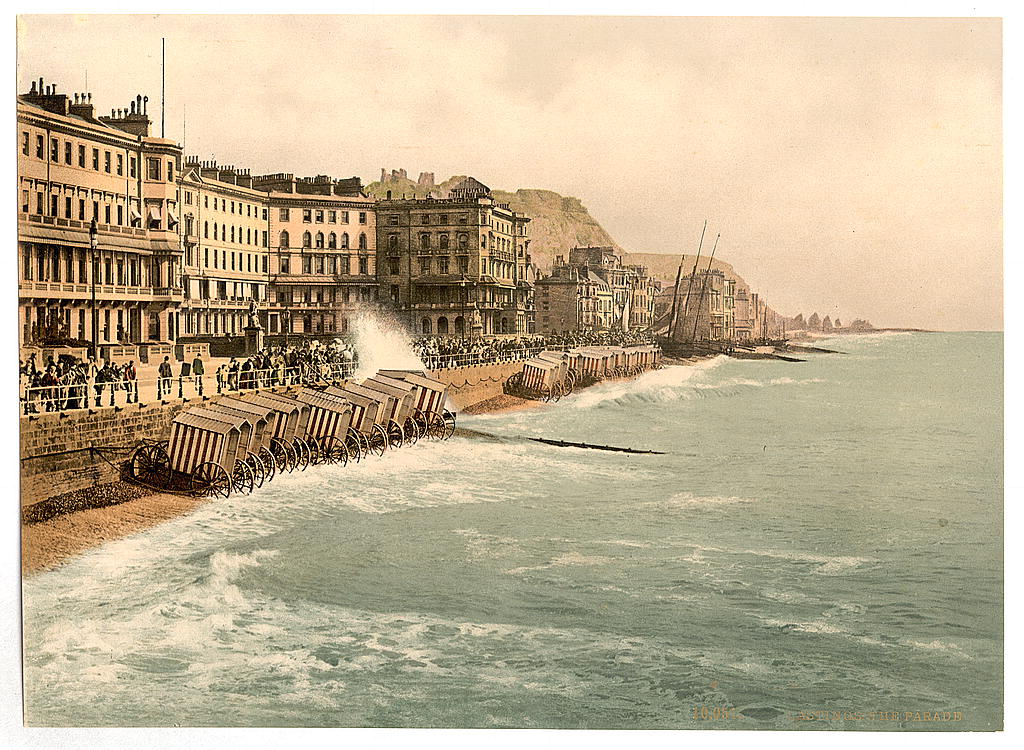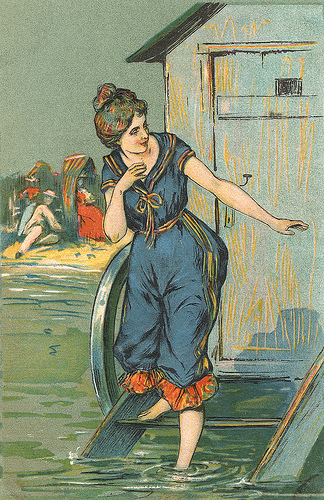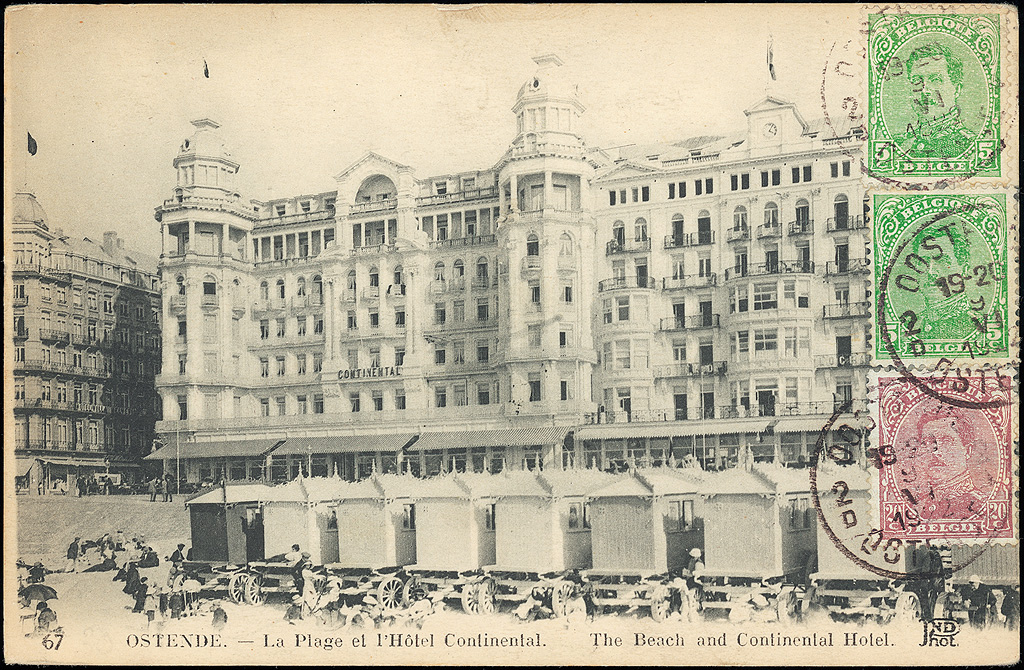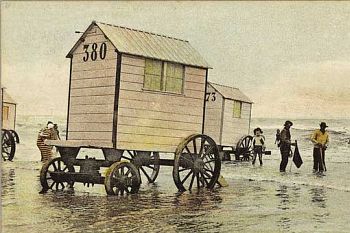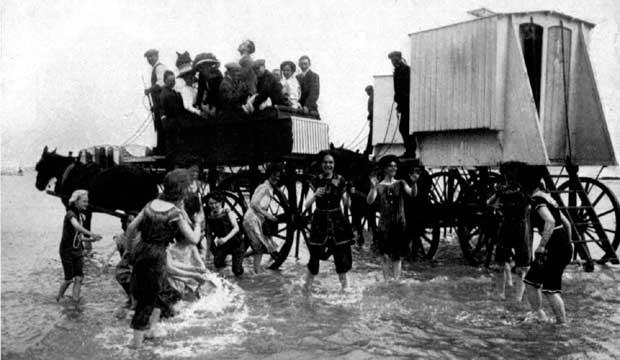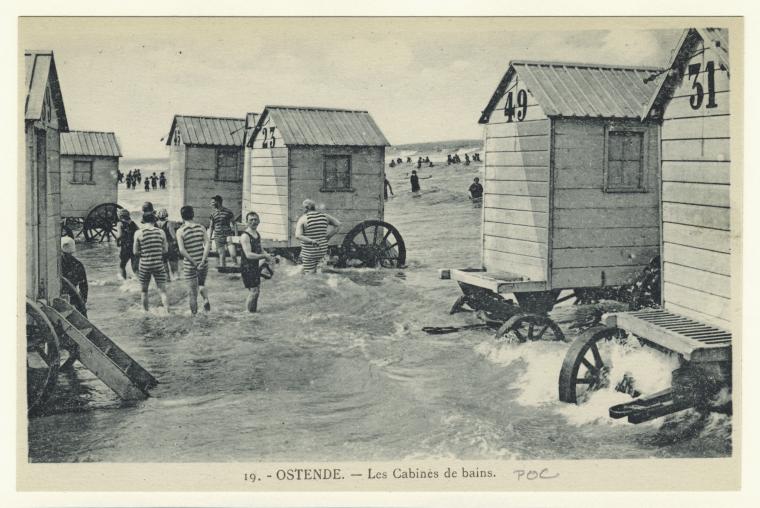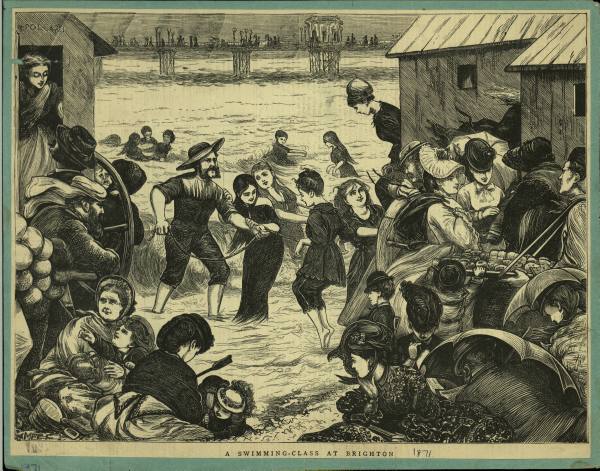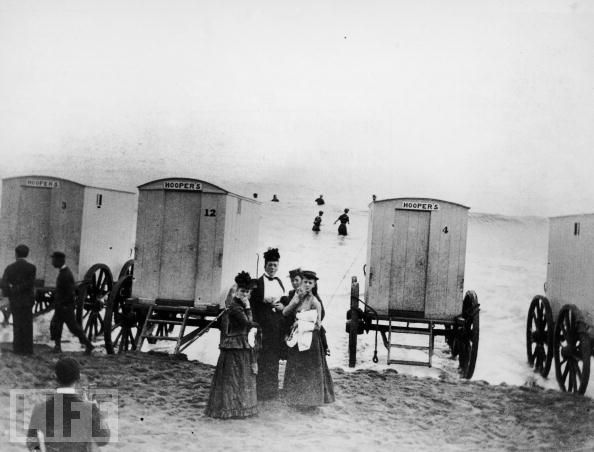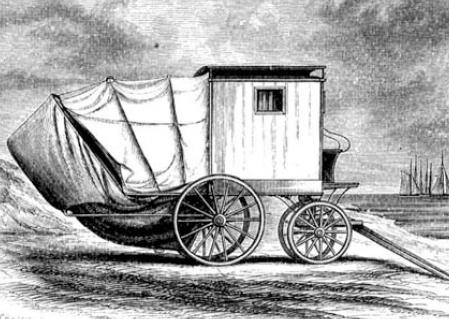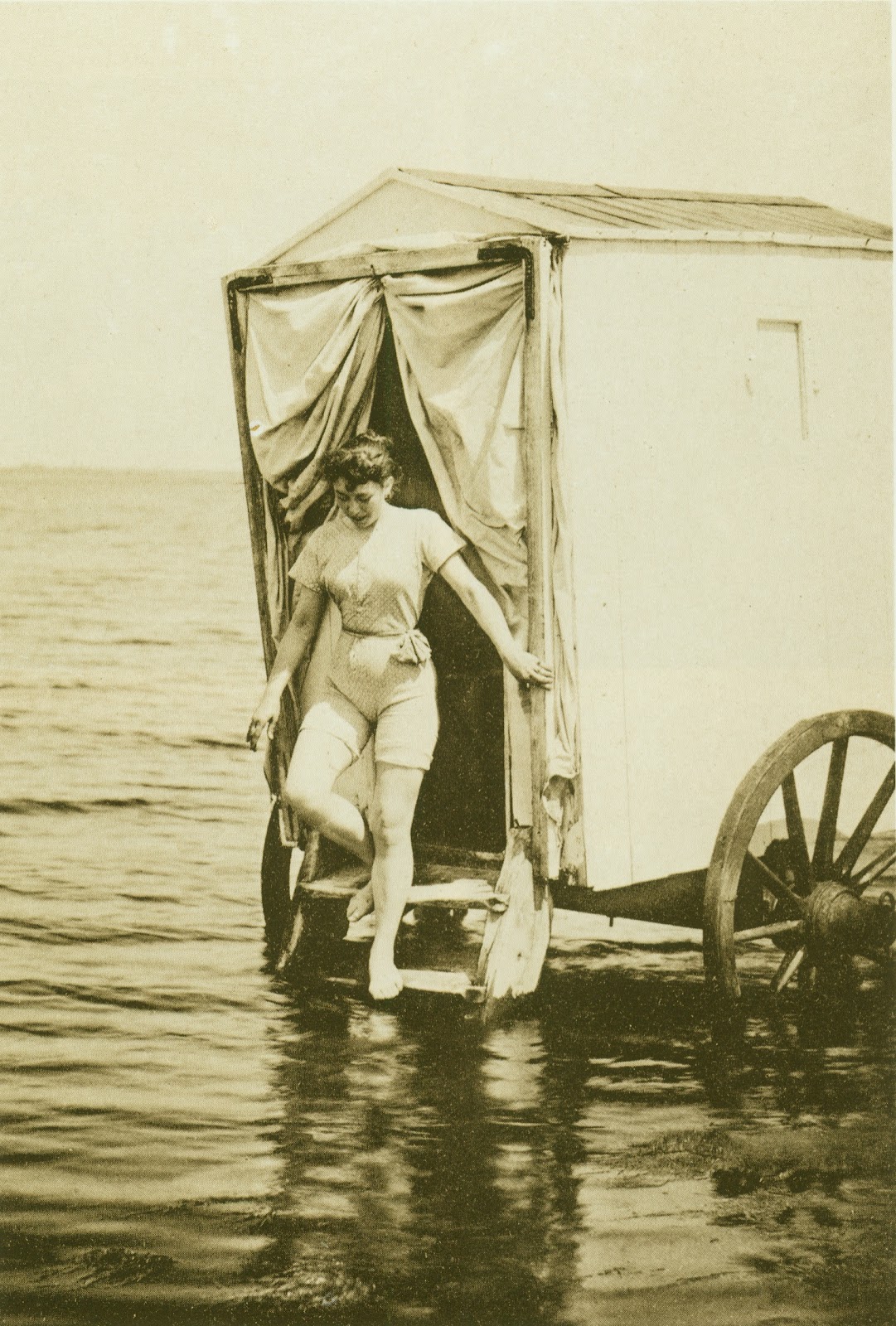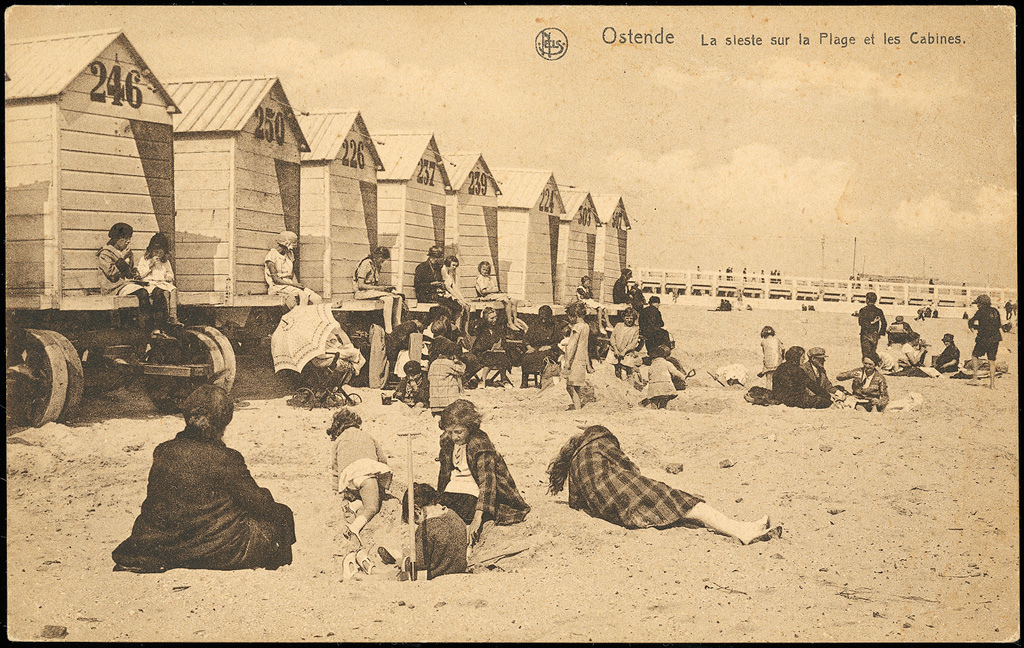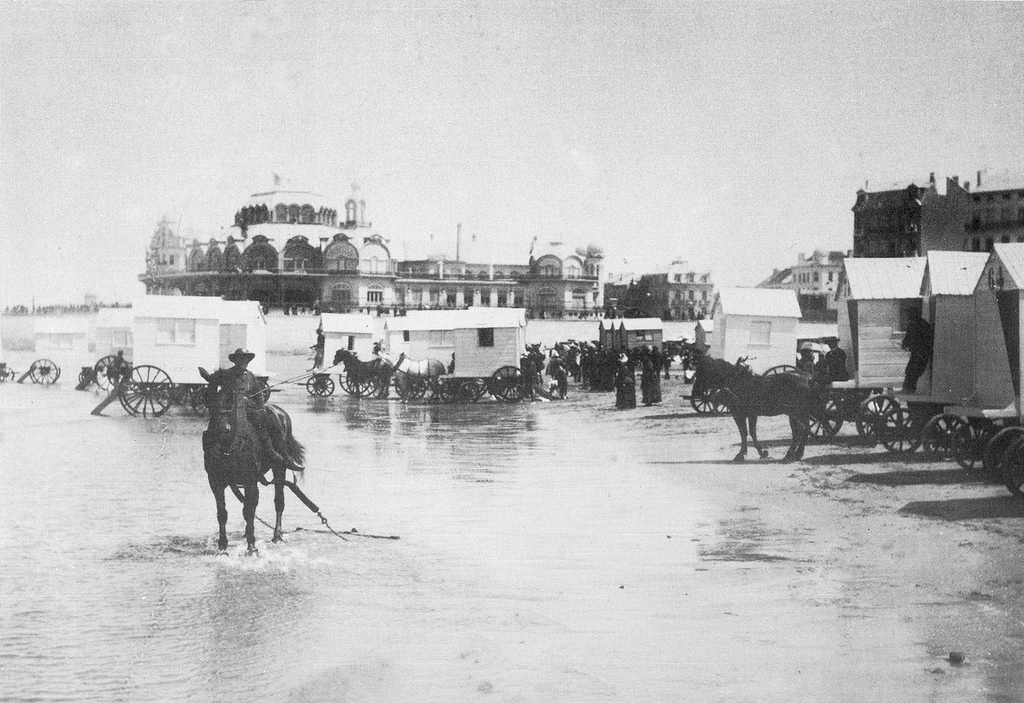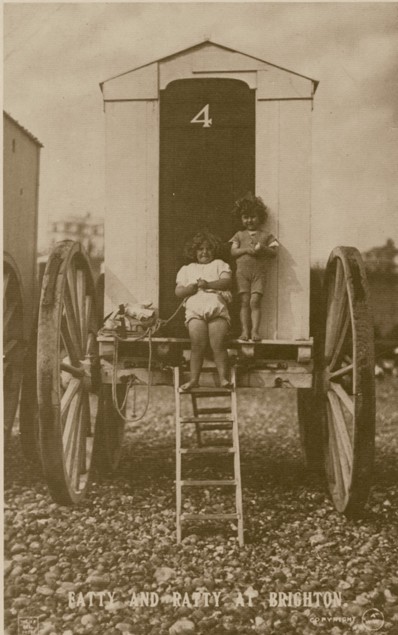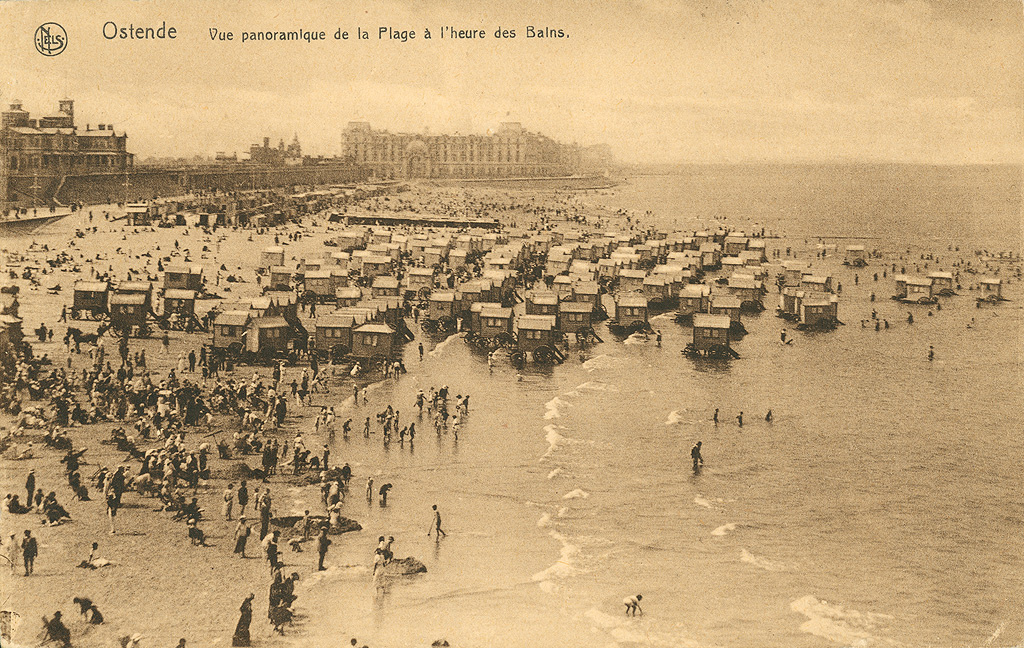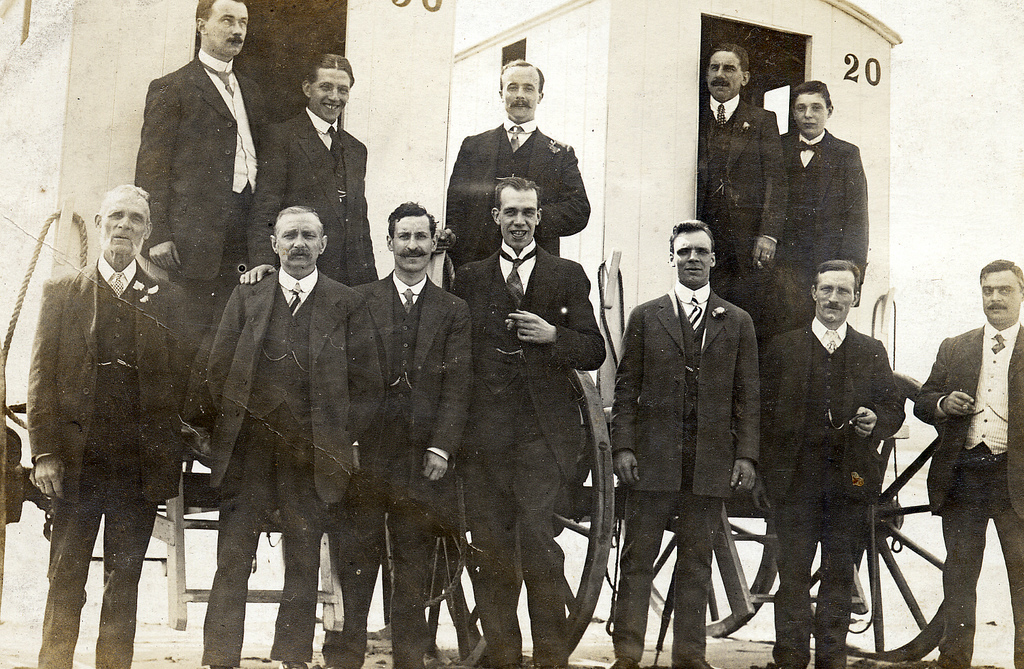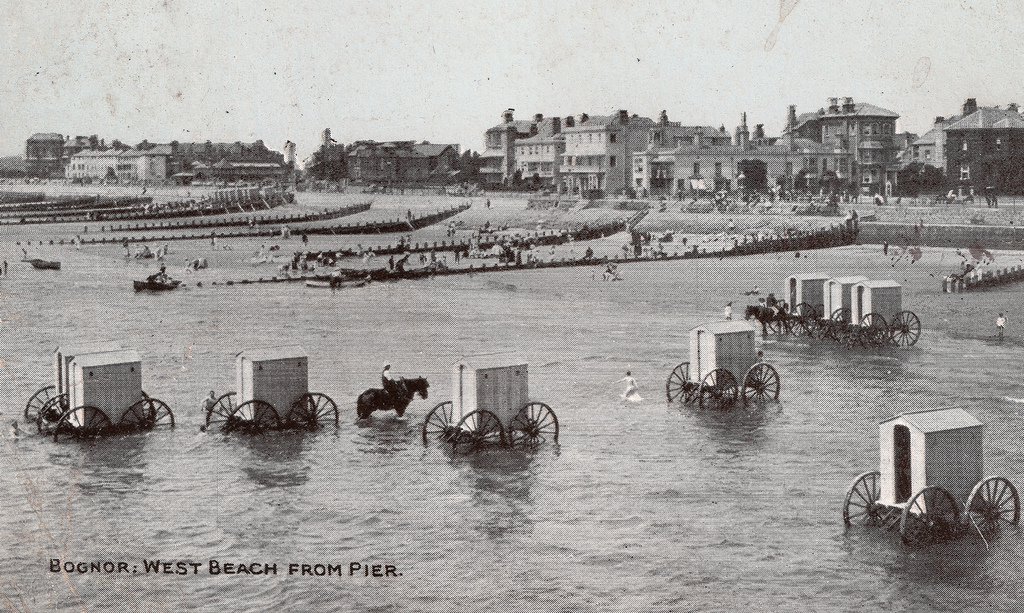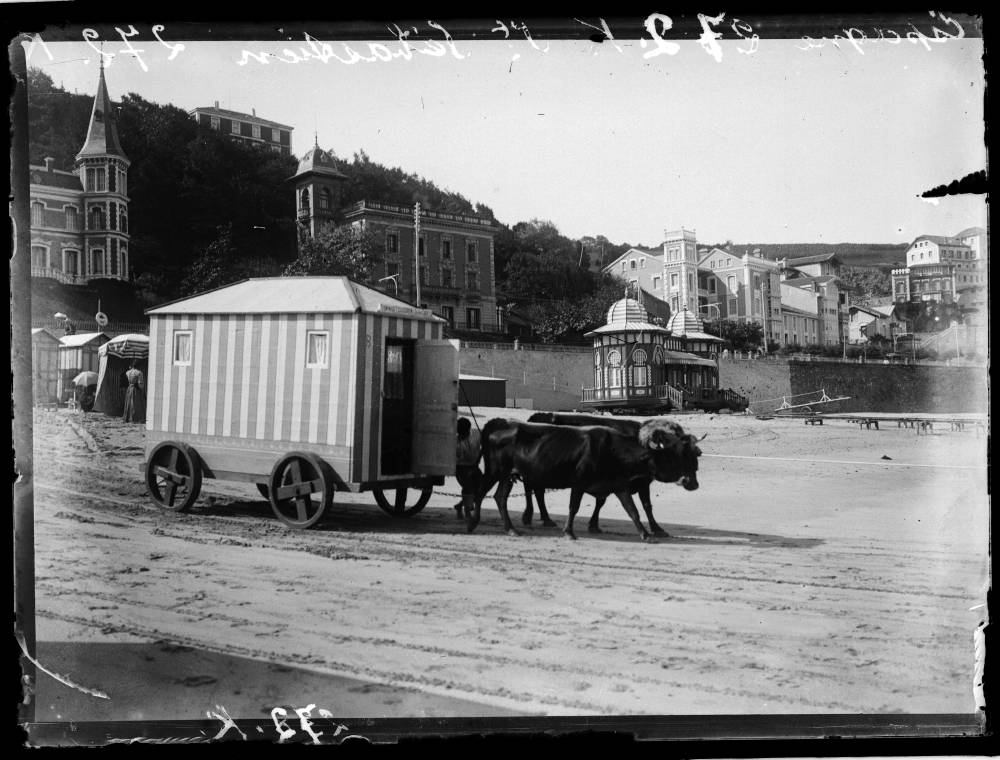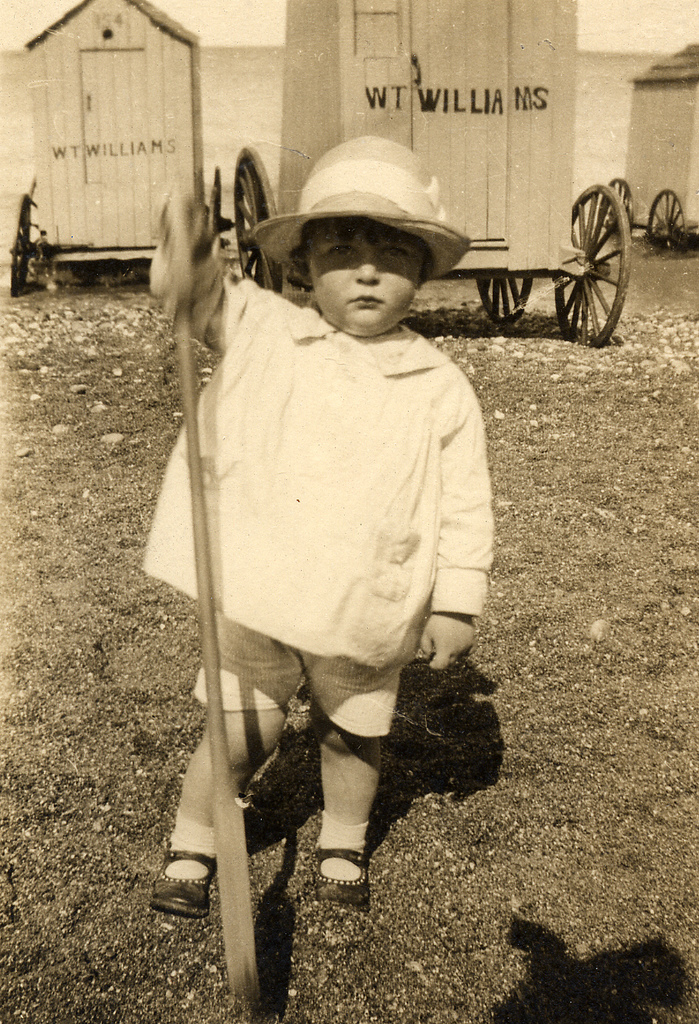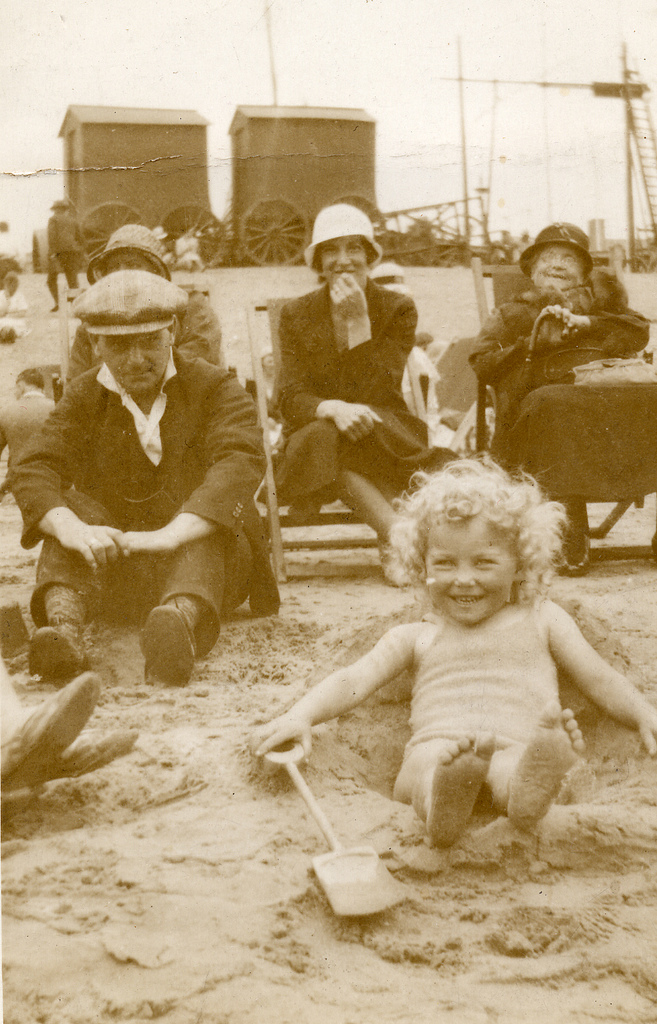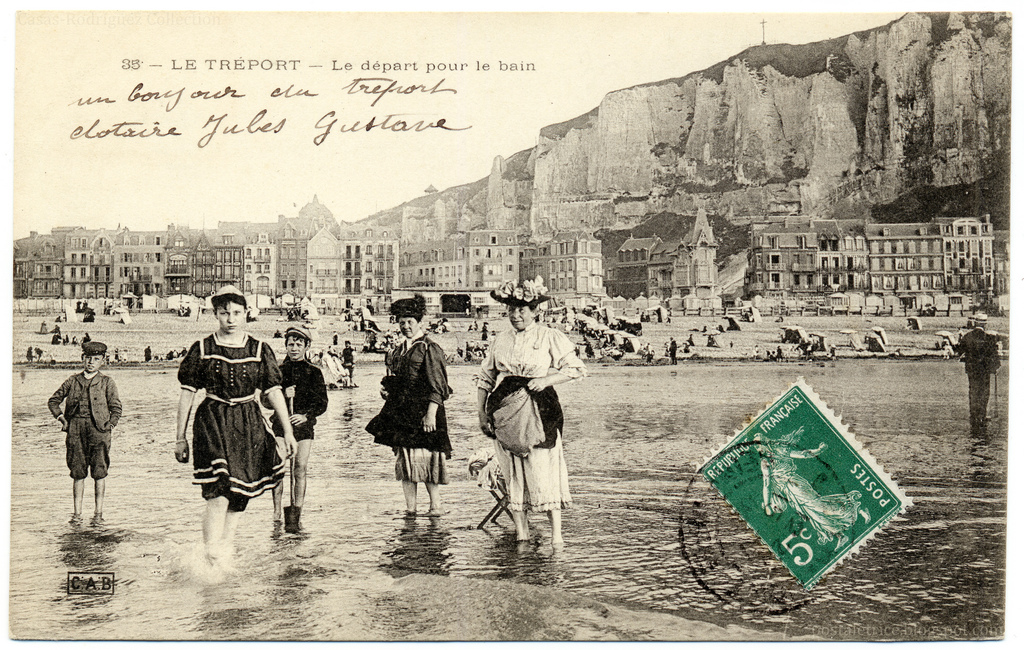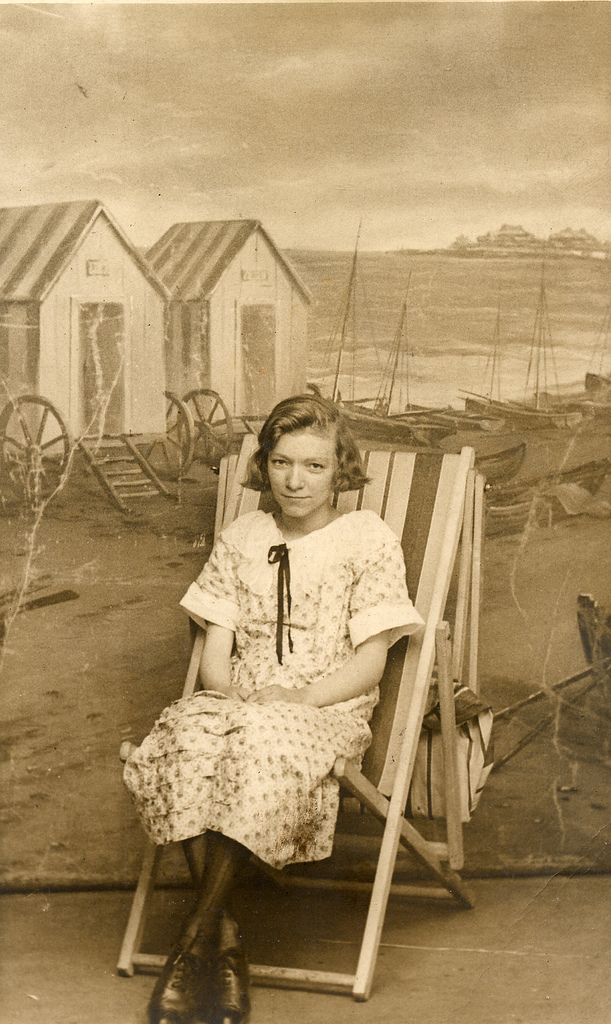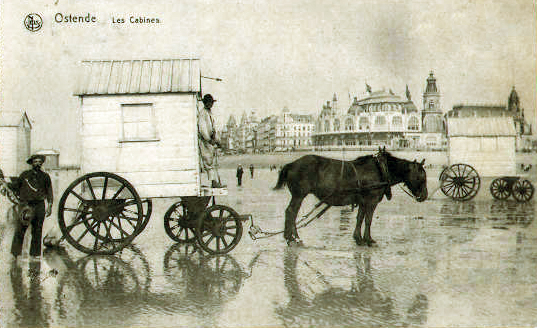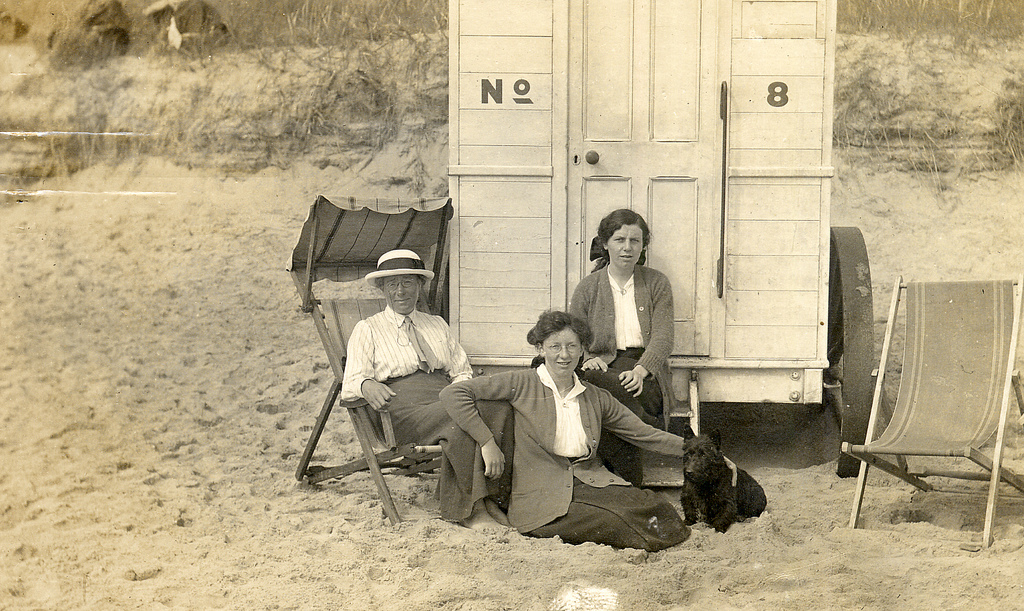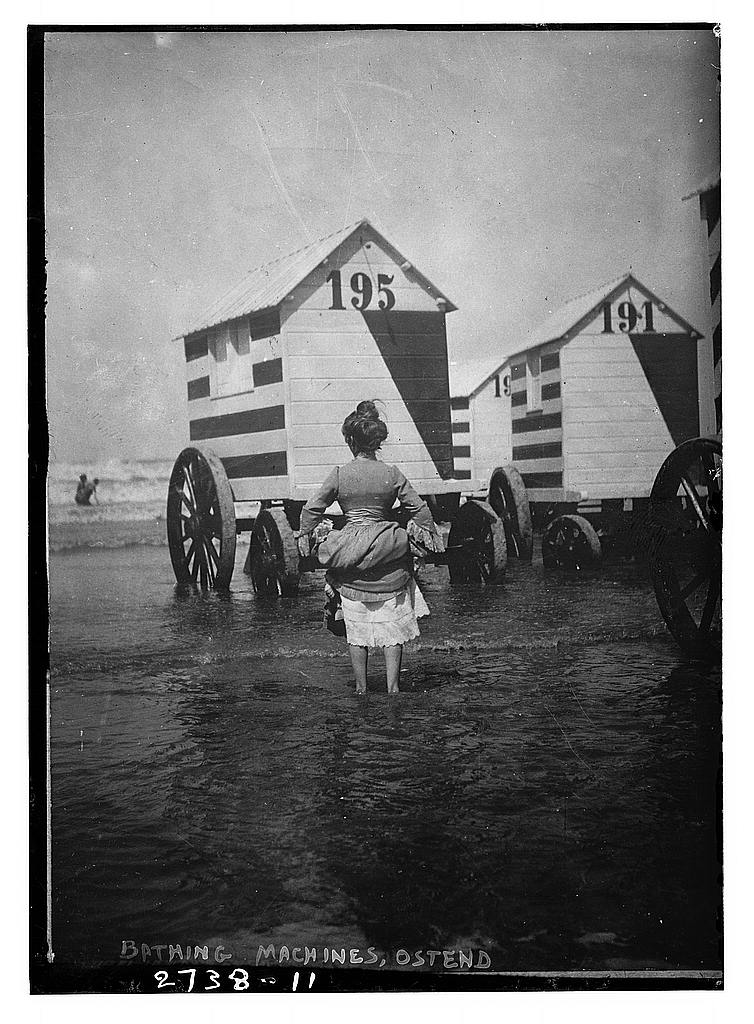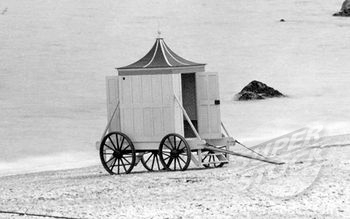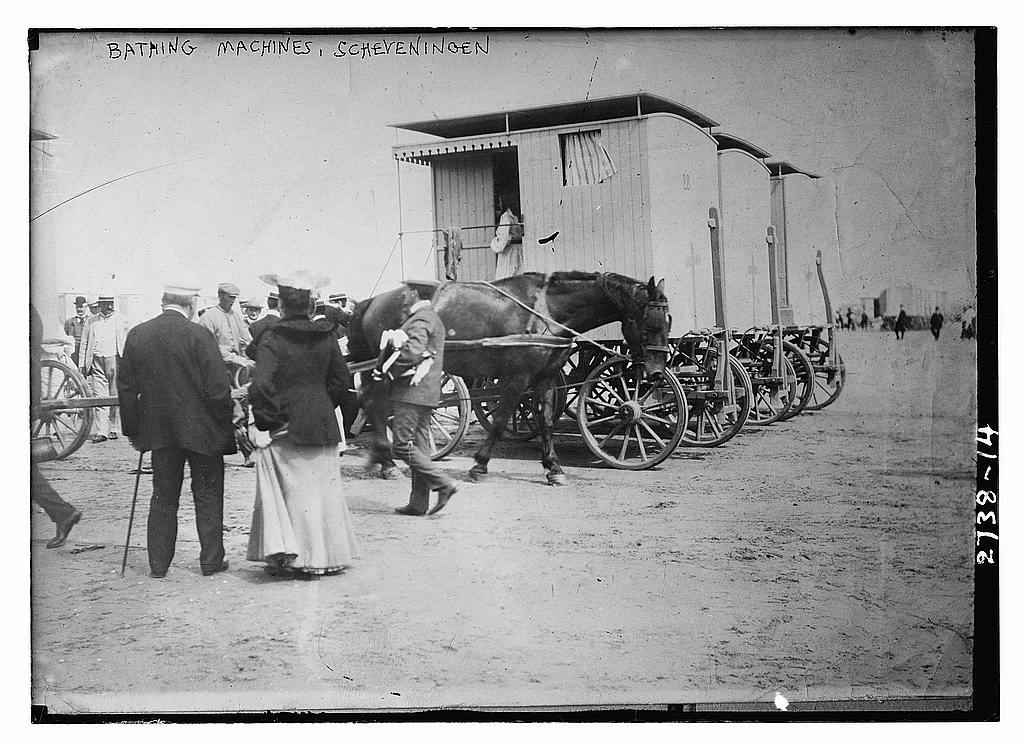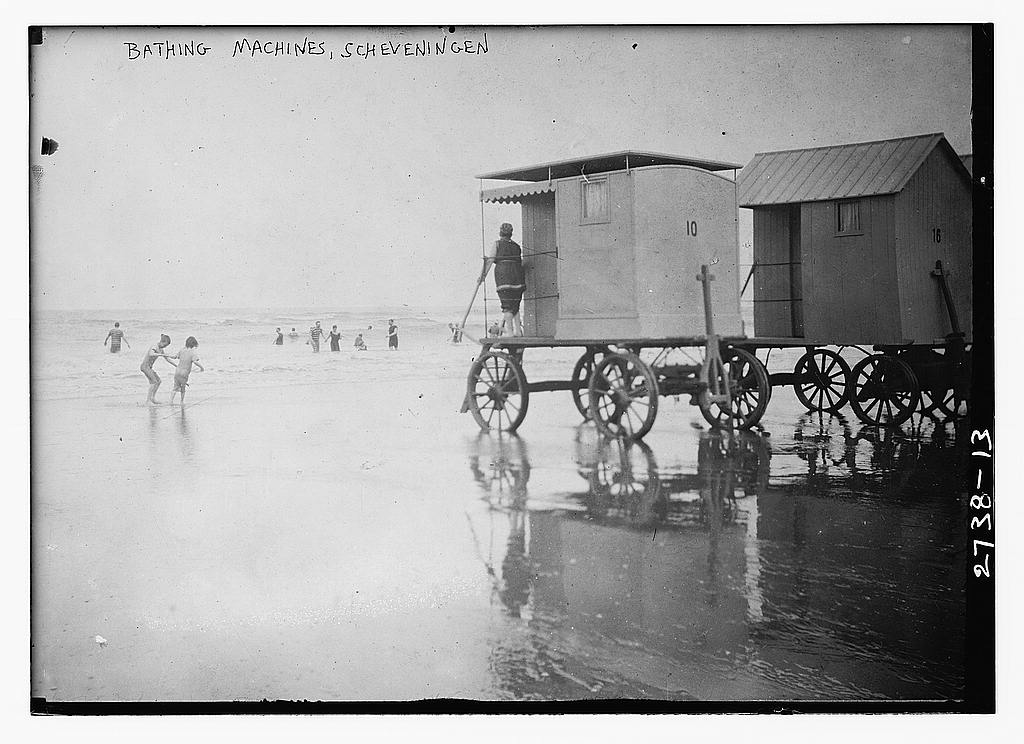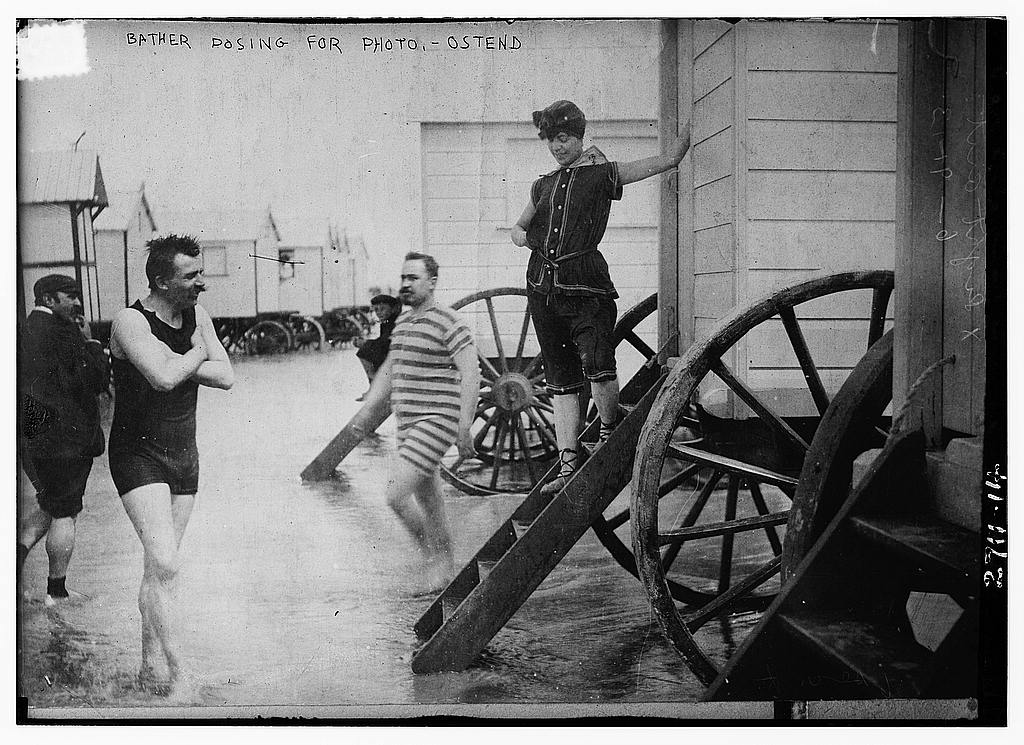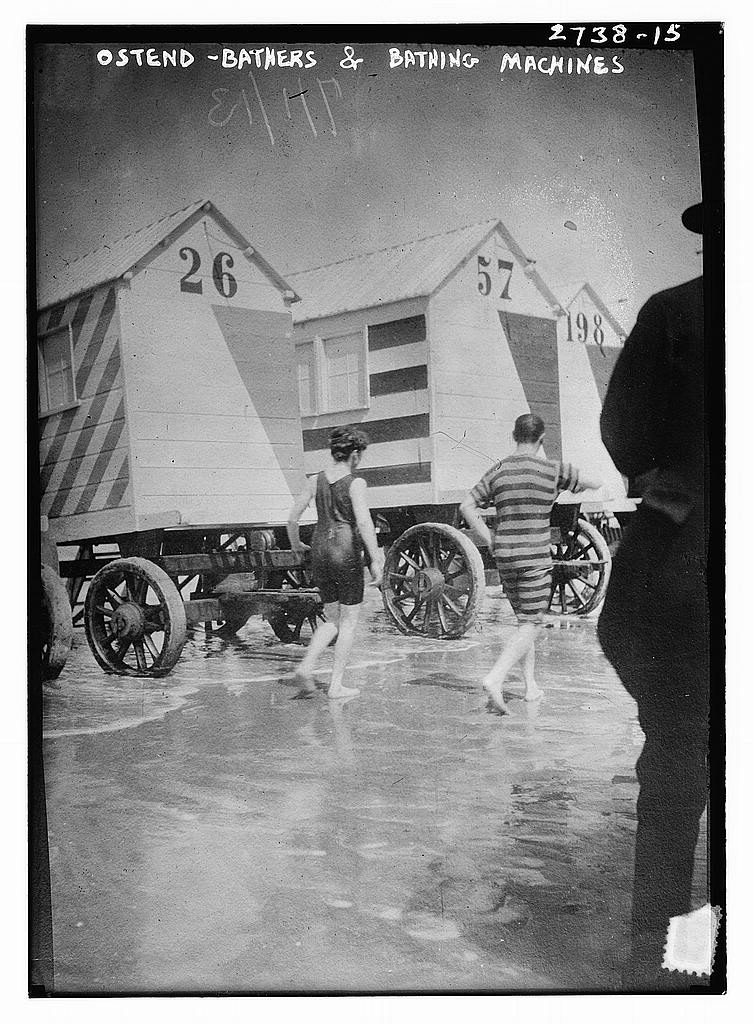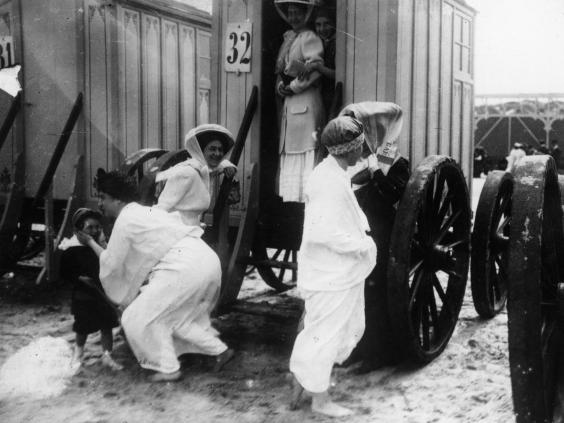
Being women beachgoer in the Victorian era was by no means a simple matter.
The bathing etiquette of the 18th and 19th centuries meant that men could not see women and their bodies. So the beaches, frequented by each gender, were well separated. Bathing machines became popular, and developed on the British coasts, also reached many locations in the vast British Empire, and France, Germany, the United States, and Mexico.
They consisted of wooden wagons with a cover curtain or wooden walls, an open ceiling through which the light could enter and one door on each side of the chassis to which it was possible to access through a ladder. They were six feet long in length and width and about 8 feet high. The interior decoration consisted of a bench, a damp flannel gown, and two towels. No light except that from the ceiling, no mirror and no fresh water.
The ladies could come in, change their clothes, and wear their bathing suits without prying eyes could see them in “improper suits”. Once ready, the cart were dragged by horses or human forces into the water. Through a ladder as well as at the entrance the bathers could go down to the water. . Some bathing machines were also equipped with a canvas tent that could be dropped in water to give even more privacy to the bather.
Swimming was certainly not a widespread practice at that time: to counter the sometimes thrilling currents and waves of the British sea bathers were tied up with a rope to the bathing machine. Some beach resorts also provided the service of a “dipper” a very strong person of the same sex who would escort the bather out to the sea in the cart and help her get in and out of the cart and the water. When the bath was over, the bather went back to the bathing machine, put on her walking clothes and signaled to the driver raising a flag she was so ready to go back to the beach.
The invention of the bathing machine is attributed to the quaker Benjamin Beale to provide as one 1776 guidebook put it “bathing [is] consistent with the strictest delicacy.”
The first bathing machines were discovered in the 1750s – traces found even in 1735 – when there were no bathing suits yet and many were bathing naked. When the first bathing suits began to appear on the scene, the rules of good society imposed on “proper woman” of not showing in swimsuit on the beach. The abolition of the segregation of the bathing areas in 1901, so the freedom for both gender of bathing in the same waters, also decreed the end of bathing machines. By the end of the 20s were practically extinct or permanently parked as stationary changing room.
Queen Victoria also owned a bathing machine attached to her Osborne House’s bolthhole on White Island. Here is in the picture below her perfectly restored bathing machine.
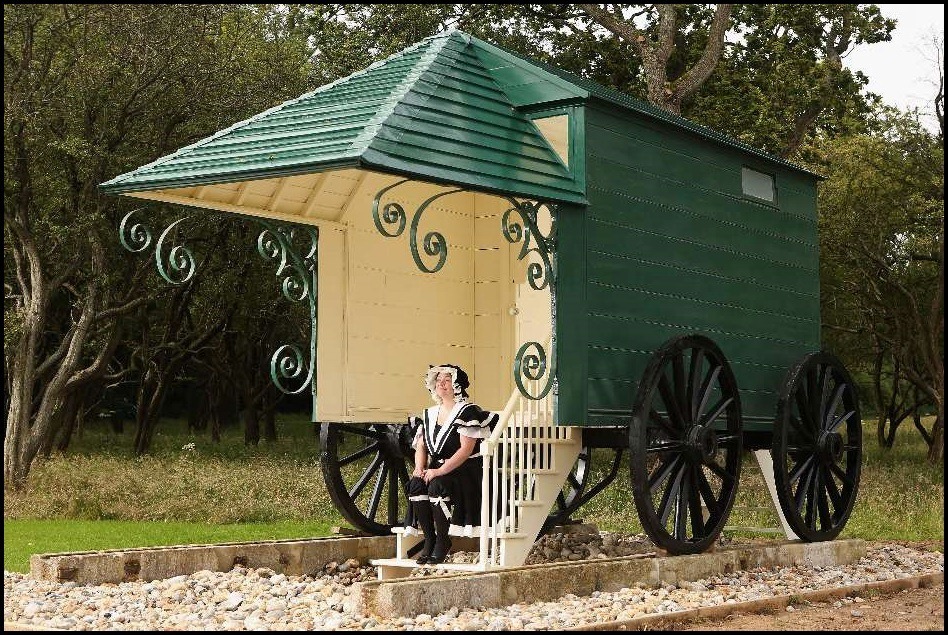
Photo via Love is Speed


